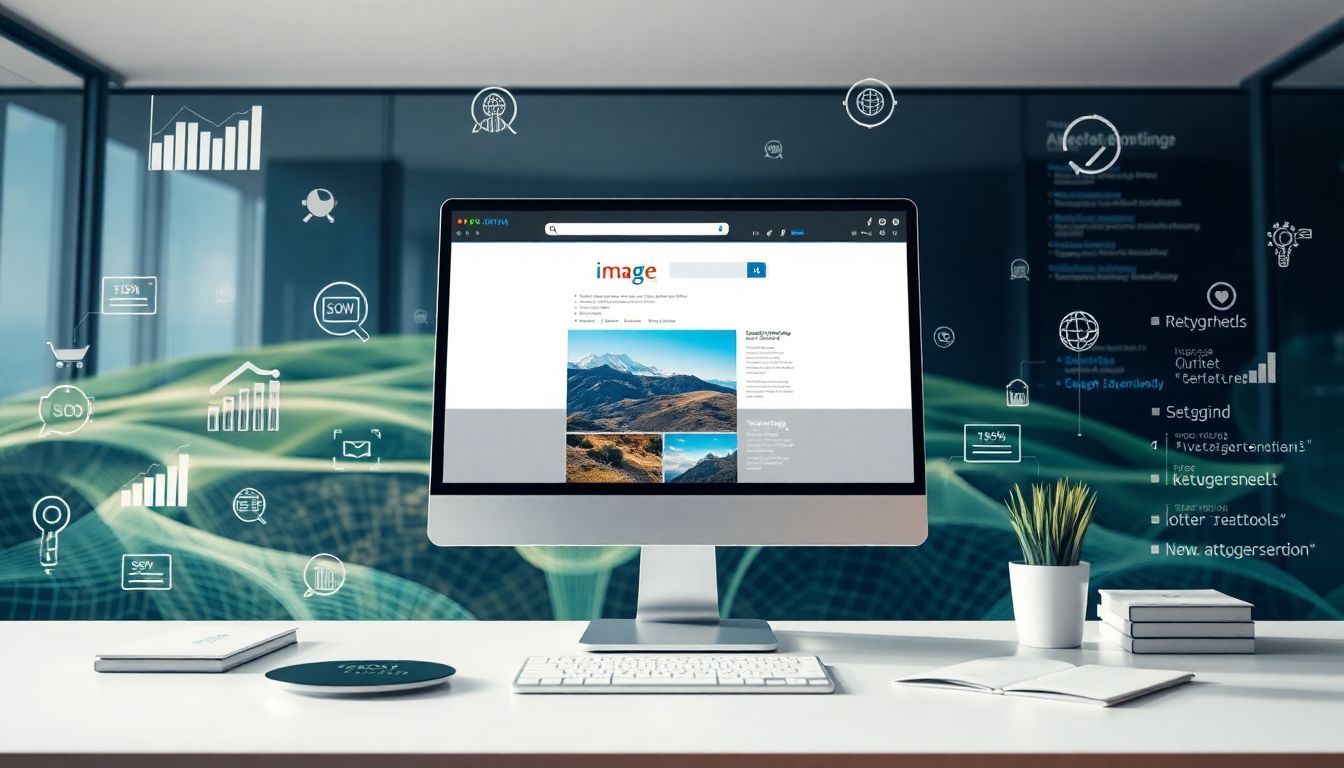
What Is Image SEO? An In-Depth Explanation
Definition of Image SEO
Image SEO is all about making your pictures easier for search engines to find and understand. It’s a part of overall SEO but focuses on the images on your site. Unlike generic SEO, which targets keywords in text, Image SEO deals with filenames, alt text, and how images fit into your content. Basically, it’s about helping Google see the pictures just as well as your written words.
The Role of Images in Search Engine Rankings
Search engines love images because they make content more engaging. When your images are optimised, they can help your page show up in Google’s image search results. Did you know that over 20% of Google’s daily searches are for images? That’s a big chunk of traffic you could be missing out on if your images aren’t optimised.
Benefits of Optimising Images
Optimised images do a lot for your website, such as:
- Bringing in more organic traffic from search engines.
- Speeding up your website, which Google loves.
- Creating a better experience for visitors, boosting engagement and conversions.
Key Elements of Image SEO
Optimising Image File Names
Pick filenames that describe what’s in the picture. Use keywords naturally, but avoid keyword stuffing. For example, instead of "IMG1234.jpg," go for "blue-running-shoes.jpg." Clear, descriptive names make it easier for Google to know what your image is about.
Alt Text Optimization
Alt text shows up if the image doesn’t load and helps search engines understand the content. Write concise descriptions that include keywords where they fit naturally. For instance, "Men’s red running shoes with white soles" beats a generic "image of shoes."
Image Titles and Captions
Using titles and captions can add extra context for your viewers. They keep visitors engaged and give search engines more clues about your images. Don’t overdo it—use captions only when they add value.
Image Size and Format
Large images slow down your website. Always aim for compression without sacrificing quality. Recommended formats include JPEG for photos, PNG for graphics with transparency, and WebP for a balance of quality and file size. Proper sizing helps improve load times and user experience.
Structured Data and Schema Markup
Adding schema markup to images tells search engines exactly what your images are. For example, product schema can help products appear with images in search results. This extra info can boost visibility and click-through rates.
Technical Best Practices for Image SEO
Image Compression and Optimization Tools
Tools like TinyPNG or ImageOptim can reduce your image size without losing quality. Compressing images speeds up your site, which helps with rankings and keeps visitors happy.
Lazy Loading and Responsive Images
Lazy loading loads images only when they come into view. This cuts down initial load time. Use HTML attributes or plugins to set this up easily. Also, make your images adaptable to different screen sizes with responsive design techniques.
URL Structure for Images
Keep your image URLs simple and descriptive. Avoid unnecessary numbers or codes. For example, use "www.example.com/images/blue-shoes.jpg" rather than "www.example.com/img?id=123."
Mobile Optimization
Most visitors go online on phones. Ensure your images look good and load fast on all devices. Google’s mobile-friendly algorithms consider image optimisation as part of their ranking signals.
Off-Page Image SEO Strategies
Image Submission and Backlink Building
Share your images on platforms like Pinterest or relevant directories. Well-linked images can attract backlinks, which boost your site’s authority and visibility.
Social Sharing and Branding
Promote your images on social media. Unique, eye-catching visuals encourage sharing. Consistent branding across images helps build recognition and trust.
Analyzing and Measuring Image SEO Performance
Tools and Metrics
Google Search Console shows how your images perform, including impressions and clicks. Track image-specific traffic and engagement to see what’s working.
Continuous Optimization
Regularly review your images. Test different versions and update outdated or slow-loading images. Keep your site fresh and optimised with ongoing tweaks.
Conclusion
Optimising your images isn’t just about making them look good — it’s about making them work for your SEO. Clear filenames, relevant alt text, fast-loading images, and schema markups all play a part in boosting your rank. Use the right tools and keep learning. Putting in the effort pays off: more traffic, faster sites, happier visitors. Start today, and watch your search rankings climb.
